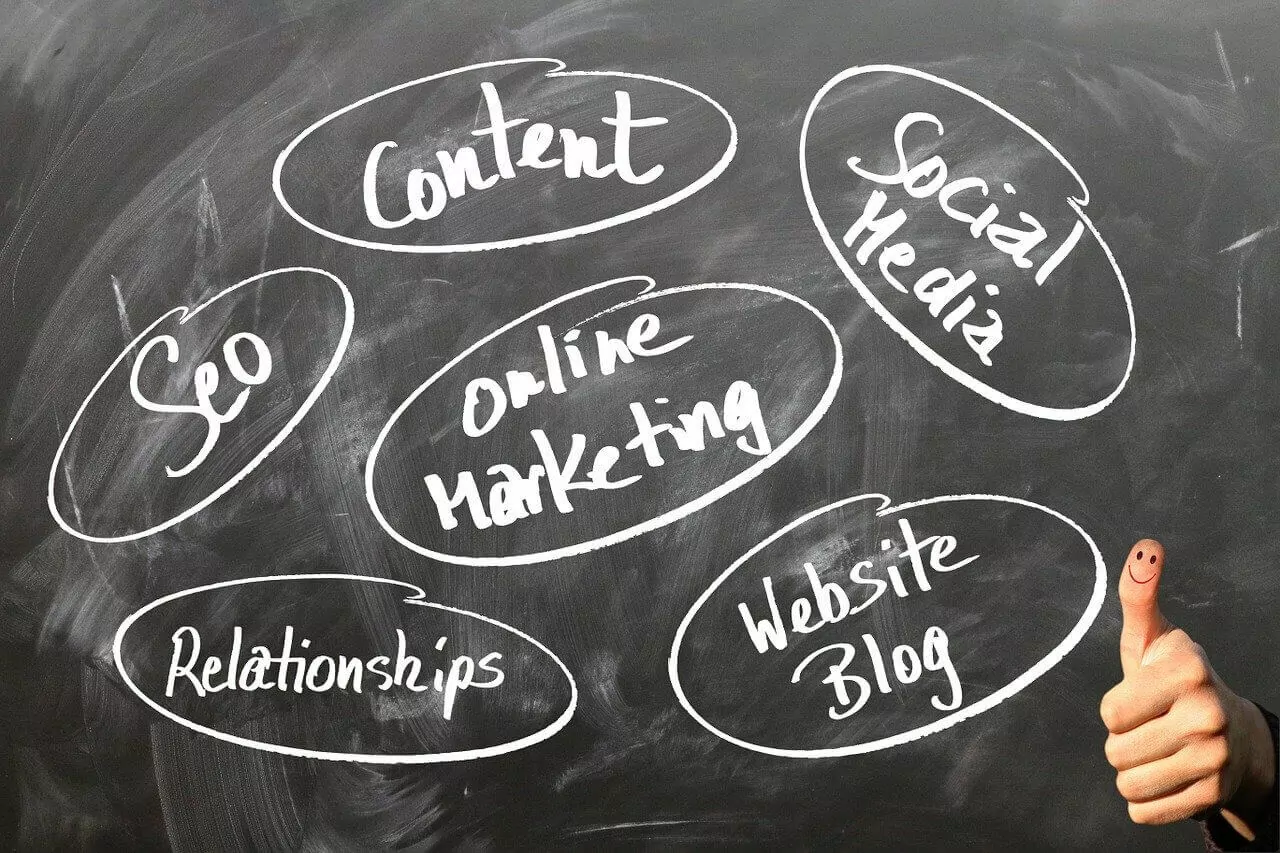As you grow your business, you have begun considering expanding your marketing campaigns to reach beyond the simple single channel methods that have been used in the past. However, when running multi-pronged marketing campaigns, it’s important to deliver a consistent message to attract your customers or clients and to follow them throughout the entire sales process.
In an integrated marketing campaign, there needs to be a clearly synthesized plan for how to guide consumers to sales. This article will serve as a primer for those beginning this process and to help you gain an understanding of the basic principles to running an integrated digital marketing campaign.
Important disclaimer: integrating digital marketing campaigning is a complex process, and it is not possible to gain a full understanding of all the details involved, however this guide should work as a primer for getting familiar with the concepts.
What are the components?
The basic principles of an integrated digital marketing strategy involve combining multiple strategies simultaneously to generate a cohesive campaign, where all pieces run consistently with each other for a consistent goal. However, before we get started, let’s look at the individual components of a digital marketing campaign.

These components will consist of:
Your website
This is the central location and repository of all your marketing messages; your strategies should center around this as it is the main go-to point for your consumers. This means that a professional and consistent design must begin here.
SEO and SEM
This is where you bring in your organic traffic. When people search for a product you want them to be able to find your product and site. Search Engine Optimization is the process by which your site will appear more highly in search results. Search Engine Marketing (SEM) is where you purchase advertising so that certain keywords will deliver your content to searchers.
Content marketing
This is original content you create for your website. It may or may not be directly related to your product, but provides information that your target markets seek, and can serve as the large end of the funnel directing users to your product.
Social media marketing
Developing an online persona is crucial for reaching people where they spend their time, and that is increasingly in social media networks, such as Twitter, Facebook, Instagram, LinkedIn, and more.
Local listings management.
Despite the global reach of the internet, people are still drawn to use local merchants. If your business has a local reach, it is important that you appear when people are looking for <product> in <location>.
Paid advertising (or pay-per-click advertising) campaigns
This involves the purchase of advertising on websites and/or Search Engines best suited for attracting your target markets.
Create a digital marketing strategy
Before beginning, in order to effectively target your ideal markets, you need a strategy. This is crucial before making any purchases, to ensure that you do not waste your resources where they will not have an effect.

Let’s look at the elements involved.
Buyer Persona
This is a description of your ideal customer. It should include basic demographic information and goals, likes, and interests.
Goals and Tools
Define your goals, and what you wish to achieve from your campaign, and then identify which tools you will need to run your campaign.
Evaluate existing channels
Identify your existing assets. These can include your website, social media channels, business partnerships, etc. Identify which channels are missing and need to be created. Identify how these are going to be used in your campaign and make any modifications you need
Audit your campaigns
Evaluate each aspect of your owned, earned (existing customers, word of mouth, goodwill, etc.), and paid media to gain an understanding of which aspects will best affect your campaigns.
Tie it together
Using the above, create a complete campaign that makes use of each of your assets and focused on the overall target. Identify milestones for reaching your goals, and continually re-evaluate each part of the campaign as you move forward.
Need the right resources to compete
Before beginning, it is important to understand that to properly execute your plan you need resources in place to cover every aspect of your campaign. If you have designed a solid campaign, you need to ensure that you don’t let crucial aspects fall behind. If you are in a particularly competitive field, you need to be sure that you have enough resources to match your opponents’ messages.

Human Capital
First and foremost, you need people. For example, when dealing with the social media aspect of your campaigns, you need to have staff available to be able to not only post daily (or more), but also to be able to respond at each step along the way. Sometimes this is just engaging with your customers, at other points it is putting out fires; this is where solid customer service staff are important.
Software
You will need will be software which can help you manage your campaigns. Good CRM solutions can help your customer service staff respond to repeat customers with solutions to their needs or complaints. In some cases, you can have technology in the form of messenger bots perform a few the initial functions that might have been allocated to sales, such as requests for information, or simple responses to frequently asked questions.
Finances
Of course, you will need the financial resources to be able to pay for advertising campaigns, particularly those which are not customer-service intensive. Examples include web campaigns, digital billboards, television, and radio.
Some areas, such as email marketing, may not require as much up-front expense, but will need the customer service resources as mentioned above.
Consistency with Variation
One important factor of integrated marketing is that you keep your message consistent across all channels; make sure that if you have a slogan that you wish to associate with your product that it appears consistently where consumers see you, so that the associations can travel from one medium to another.
At first you may be thinking that you can simply run the same ad globally, however integrated marketing means a little more than simply showing the exact same advertisement everywhere; you need to adapt to the medium. One channel can lead to another, and each one varies depending on the segment of the sales cycle. You should use similar graphics and images across all media, but the way that the message is relayed should be customized for a specific purpose.
RACE Model
A full understanding of the marketing cycle uses what we term the “RACE” model, which is an acronym for Reach, Act, Convert, and Engage. By following this model, we can see how different parts of an integrated campaign come into play and help generate the business you need.
Fundamental to this model is the importance of interaction with your customers and clients, including both potential, current, and past.
Let’s define each of these.
Reach
“Reach” is where you identify and attract new customers. These potential customers and clients can be considered the equivalent of window shoppers; this part of your campaign is designed to catch the eye of those who may be interested in your product but have not yet made a move to make a purchase.
This segment includes any of the following methods of advertising, or marketing
- TV
- Radio
- Events
- Sponsorship
- Search PPC (pay per click)
- SEO
- Content Marketing
- Popup Stores
Act
The “Act” stage is where you are engaging your customers during and after their first purchase. These will include
- Popup Stores (note that these serve both as advertising and POS nodes)
- Social Media
- Influencer Outreach
- Google Shopping
- Affiliates
- CRO
- Remarketing
- Merchandising
- Marketing Automation
Convert
In order to convert either indecisive customers or to encourage repeat customers, you may use any of the following methods:
- Omnichannel campaigns
- Messenger bots
- Click + collect
- Community
Engage
Maintaining customers and re-engaging lapsed customers is also a crucial part of the integrated marketing strategy. For this, the following methods come into play:
- Personalized Loyalty programs
- Top-grade Customer service
- Social customer service
- Re-engage email program
Important Tips

Flexibility
Throughout the process you will likely be able to gain many insights along the way; you should be agile enough to be able to make changes to your campaigns if your numbers start indicating success in certain areas.
This is especially true with digital campaigns; you can use real time statistics to understand what does and does not work, particularly if you are making use of A/B testing during your online marketing activities.
A great deal of information can also be gleaned from ML and AI, so that you can learn about how to best directly target your ideal customers. As you gain more data throughout the marketing process, if you can reintegrate it back into your strategy, you will be able to better maximize your results.
It is also wise to “future-proof” your marketing model. You need to be able to adapt to new technologies that appear that may not have previously been anticipated; be ready to adapt to major disruptors (such as the advent of smartphones), and make sure your campaign can adapt quickly to these new media.
Always be available
With a digital economy, consumers no longer abide by the store hours that standard brick and mortar businesses have relied upon. You also now have the ability for a global reach, meaning that your resources will need to be available 24/7. If a shopper has a problem or a question at 2AM, while they may not expect an immediate response to a question, if they do receive one, this will drastically increase their positive image of your company
Encourage user interaction
Your customers, especially within the social media environment may be your best marketers. If people use your product in a digital environment (e.g. YouTube) or even simply talk about your product, this should be part of your integrated digital marketing campaign.
Conclusion
As you may have gathered from reading this, this is only a basic introduction to the process, and that we have barely scratched the surface. Integrated Digital Marketing is something for which it is best to rely upon a professional. Contact Mabbly to help you get started and to guide you successfully along your way!





